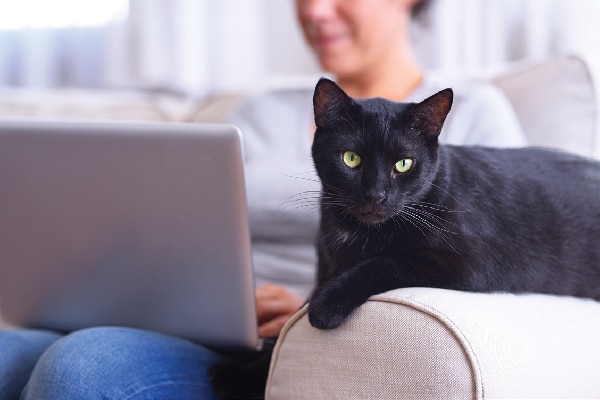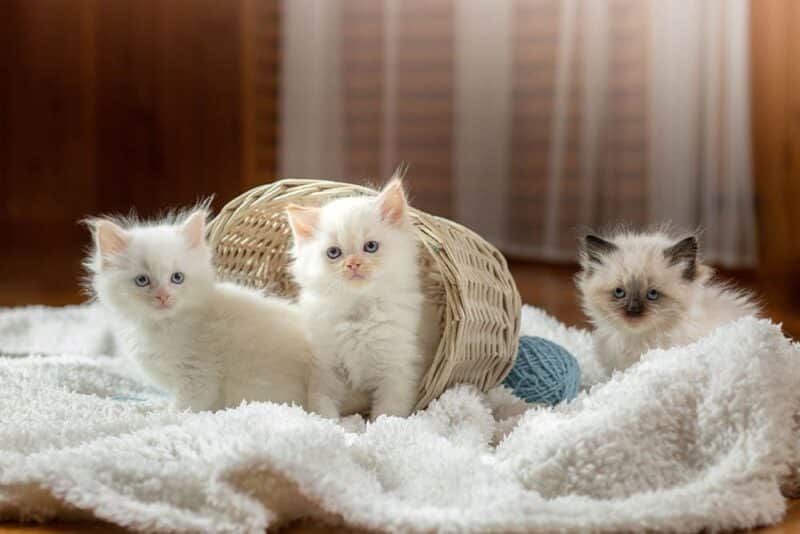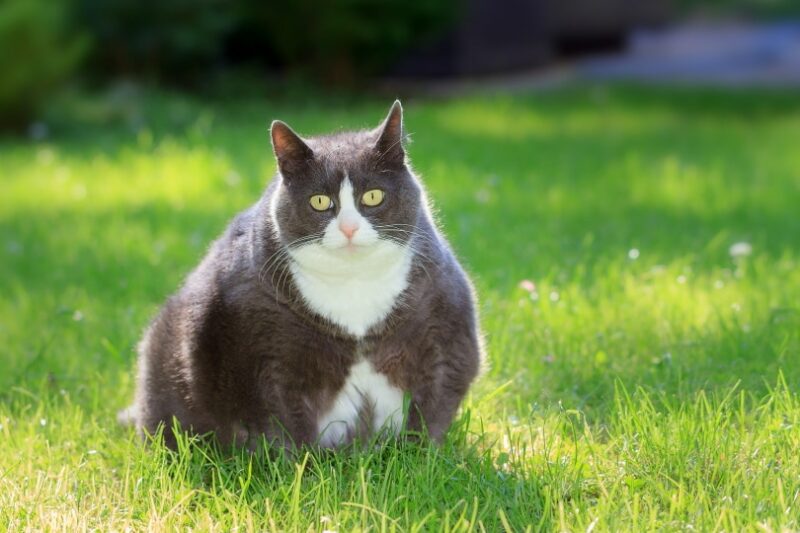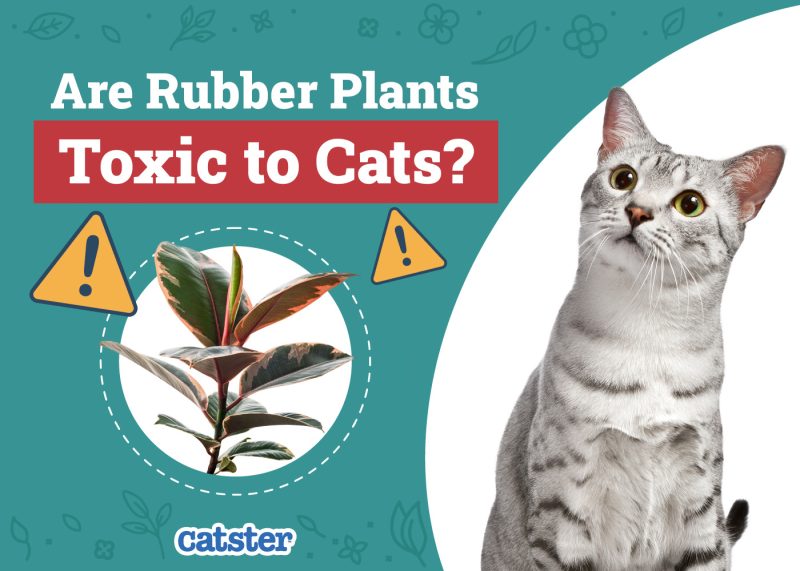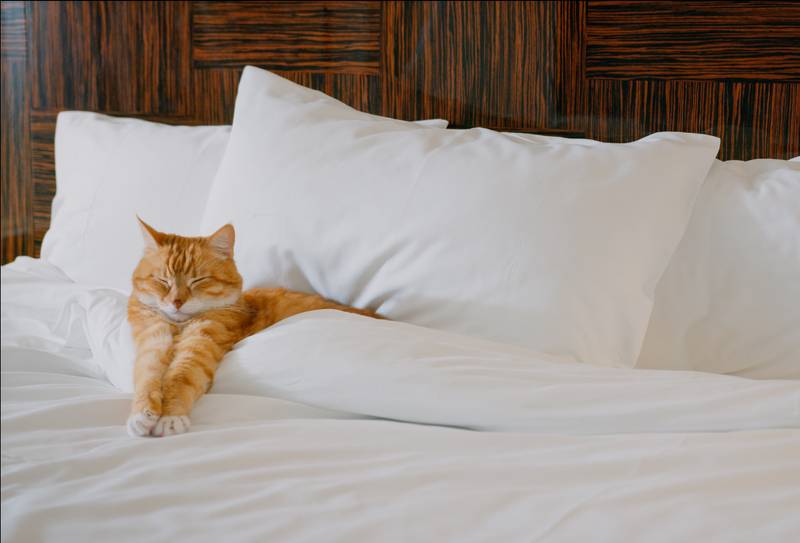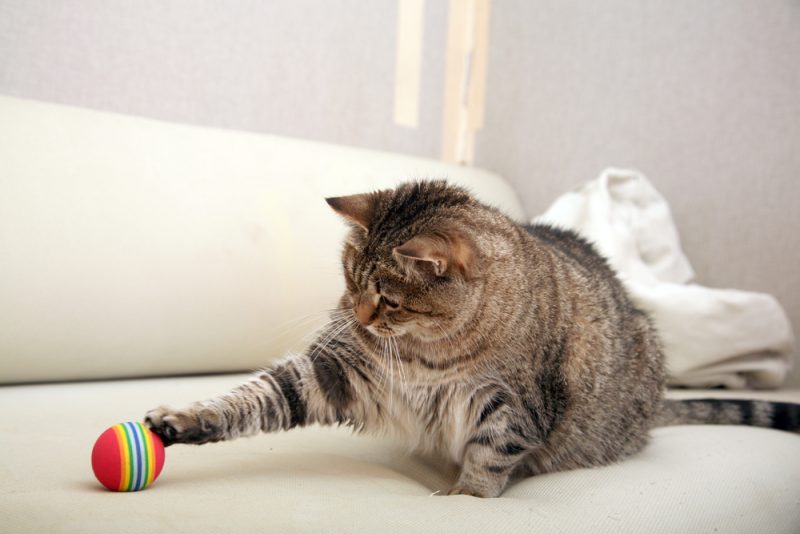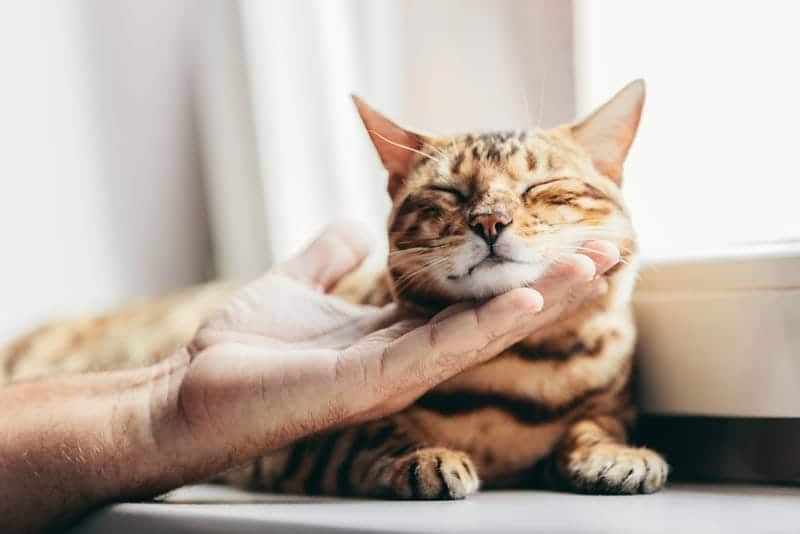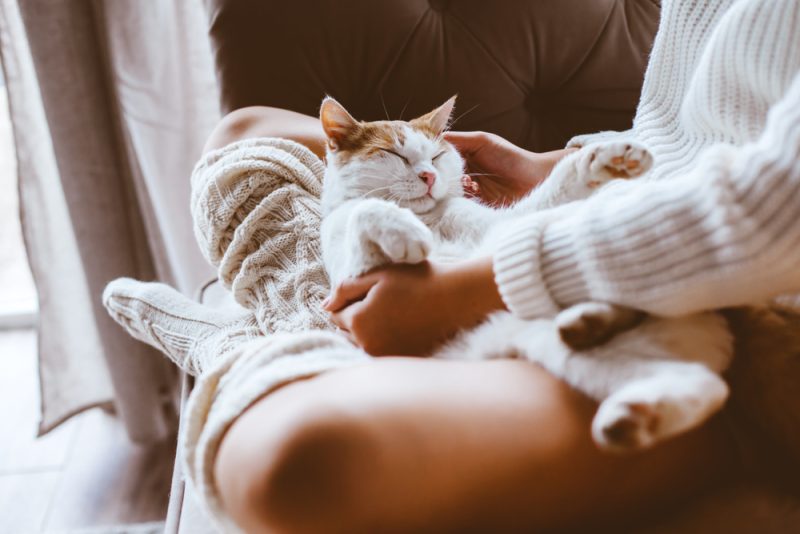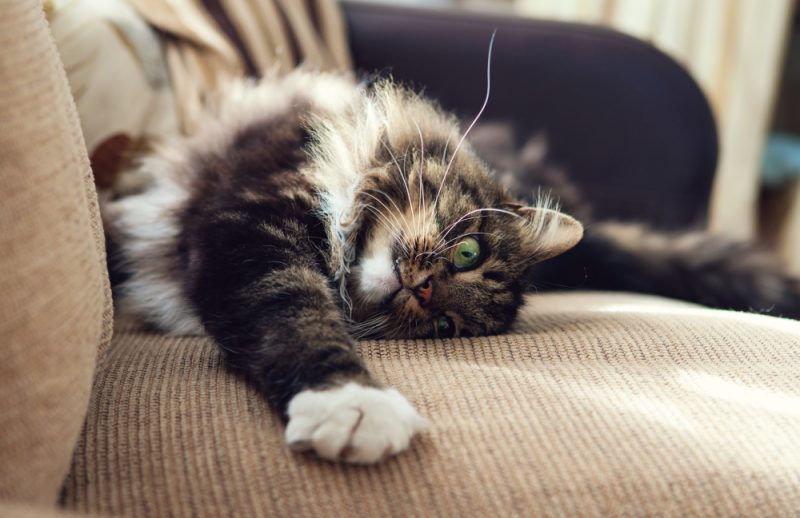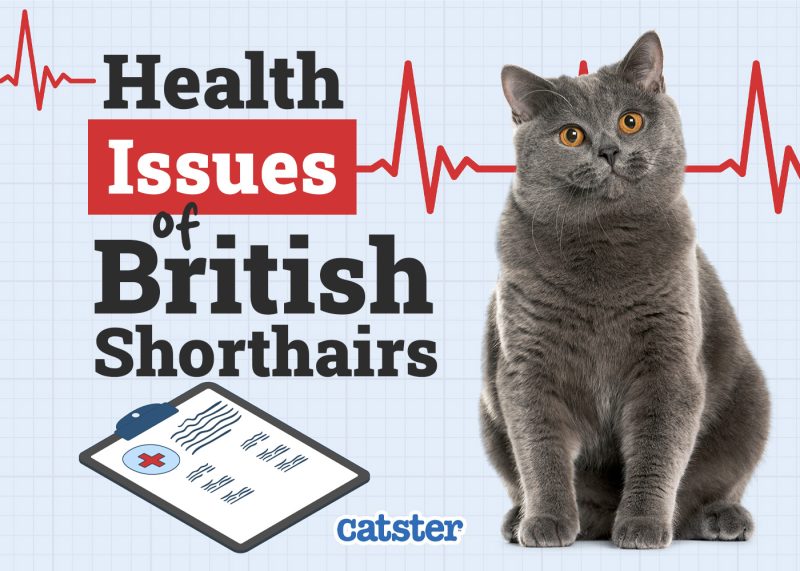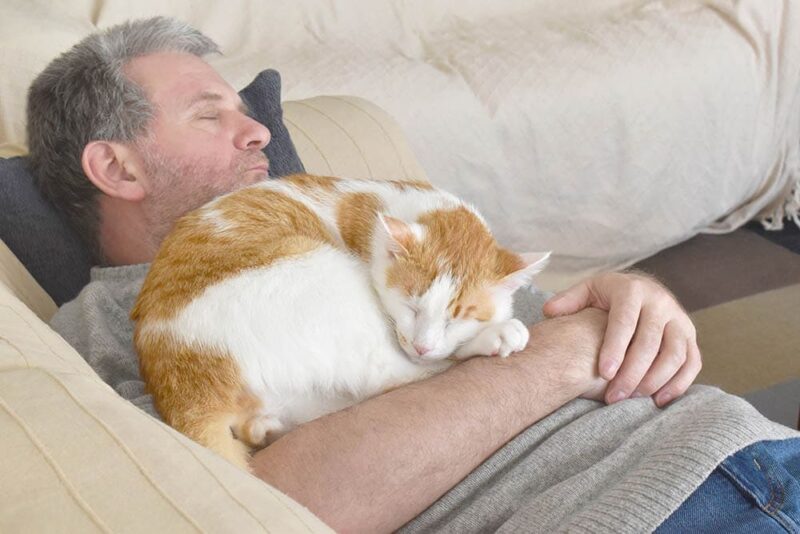In this article
Cats are just so unique! Some cats are super energetic, while others are quite calm. Many cats are standoffish, but just as many are cuddly.
So, why are some cats not lap cats? This can be disappointing for some owners. After all, having a soft cat sleeping on your lap can be so warm and cozy.
We do our best to answer the question for you here and give you tips that might help turn your non-lap cat into a lap cat.

The 6 Reasons Your Cat May Not Want to Sit With You
1. It Could Be the Breed
The breed of the cat may perhaps be a factor in how cuddly a cat can be. Some breeds are known for being Velcro cats and shadowing you everywhere. These anecdotally include:
Other breeds are anecdotally known to be quite independent and less affectionate:
Of course, there are always exceptions. Some of the affectionate breeds won’t be lap cats, and some of the more independent cats can be incredibly affectionate. However, claims that people have about their cat breeds perhaps being a factor with regards to their sociability aren’t entirely unfounded—as cats of certain breeds 1 might inherit some behavior traits.

2. Age Might Be a Factor
When you first bring home a kitten, they tend to be your shadow and will spend a great deal of time falling asleep on you. But as they mature and become adolescents, they are so busy exploring, playing, and just zooming around everywhere that they might forgo your lap.
When a cat becomes an adult, they start to calm down, and this is when they might become a lap cat again, but not every cat will. When some cats become seniors, they might get more snuggly and enjoy your warm lap.
3. They Need Time to Trust
If you’ve adopted a stray cat, they need time to adjust to their new environment and to you. Sleeping puts cats in a vulnerable position, so they usually feel safer in an out-of-the-way hiding spot.
It takes time and patience to earn a cat’s trust, and even when you do, there’s still no guarantee that they will be a lap cat.
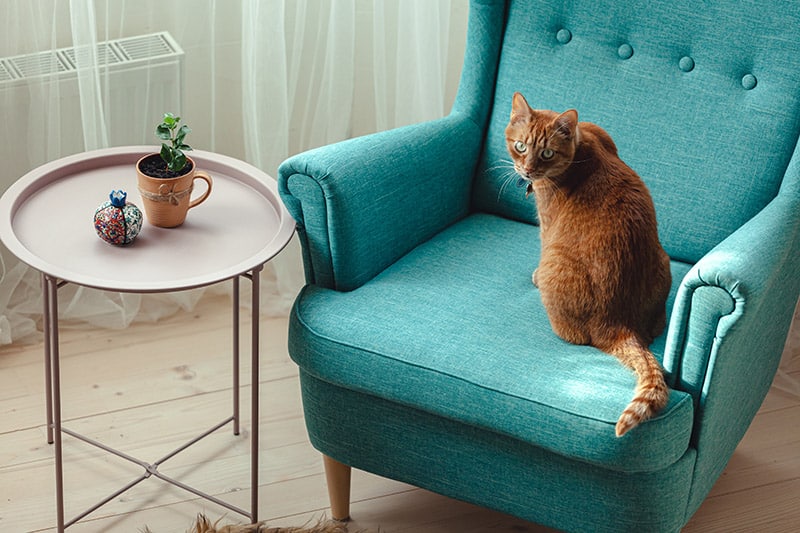
4. They Weren’t Socialized Well
Kittens shouldn’t leave their mothers and siblings until they are about 8 to 10 weeks of age. Until they leave the proverbial nest, kittens should be introduced to different people and situations. Being handled by friendly, gentle people will give them the tools that they need to be social in the future.
This type of socializing is critical between the ages of 3 and 10 weeks. It will help the kitten grow into a well-adjusted and friendly adult cat.
5. It’s a Personality Thing
It shouldn’t come as a surprise that each cat is unique. They are kind of like snowflakes: no two are exactly alike. Some cats love to follow you around and will sleep on your lap every chance they get, while others prefer to sleep near you rather than on you.
These cats will show their love in other ways. You just have to look for these signs and respect your cat—no matter how disappointing it can be.
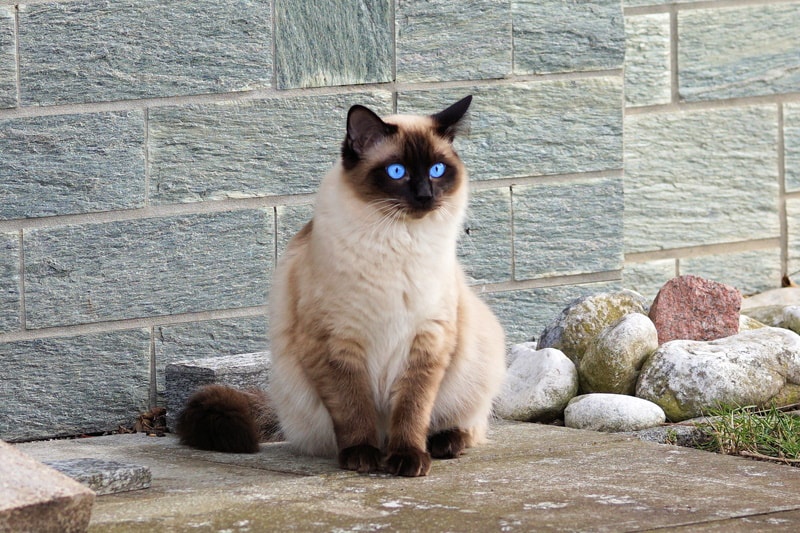
6. You Adopted a “Shoulder” Cat
Some cats have a natural desire to seek high perches when they rest. This is understandable, as they would have a better vantage point from which to survey their environment at any given time. When cuddled, these cats sometimes have a tendency to climb up onto their handler’s shoulders for this reason—earning them the nickname of “shoulder” cats. If you have such a cat, they likely just prefer your shoulder over your lap.

The 8 Tips for Turning Your Cat Into a Lap Cat
It is possible to turn a cat into a lap cat, but know that these methods may not work for your cat, and you’ll need to be okay with that.
1. Have a Welcoming Environment
Your cat’s environment should be relatively quiet and calm. If things are chaotic and there are stressors like other pets or strangers visiting, you should make adjustments. Examples include adding a cat tree and places where your cat can hide in the room. If everything is calm, you will probably see more success in your attempts to modify your pet’s behavior.
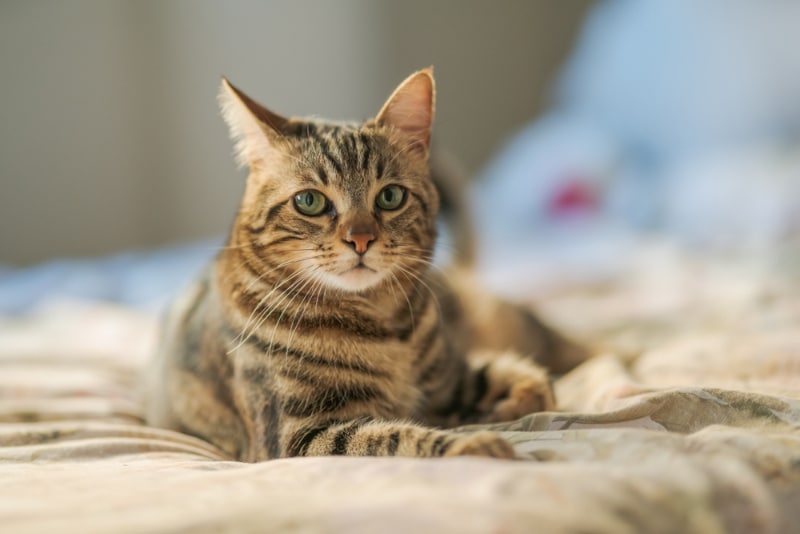
2. Make Preparations
Before enticing your cat to your lap, you need to do a few things in preparation. Set your phone on silent and put it away; this is mainly for the early stages. Sudden noises or vibrations might scare your cat off your lap.
You might also want to spend time playing with your cat beforehand. This can create a stronger bond and tire them out, so they might be more inclined to sleep on your lap.
3. Make Your Lap Enticing
You’ll need to do a few things to make your lap appealing to your cat. Find a soft and warm blanket and place it over your lap. If your cat already sleeps on a favorite blanket, this is even better. It will smell like them, which will make them feel more comfortable sleeping on your lap.
You should also ensure that you’re sitting comfortably with nothing on your lap but the blanket.
4. Use Treats
Use your cat’s favorite treats. If they don’t go wild over their usual treats, try something new. You’ll need a high-value treat to motivate your cat to climb onto your lap. Many cats love lickable treats!
If your cat seems reluctant, you can place a treat on the floor next to your feet, a few next to you on the couch, and finally, on your lap (lickable treats aren’t great for this). However, please keep in mind that treats are often very calorie-dense, and you’ll have to make appropriate adjustments to your pet’s meals to ensure you don’t end up overfeeding them.
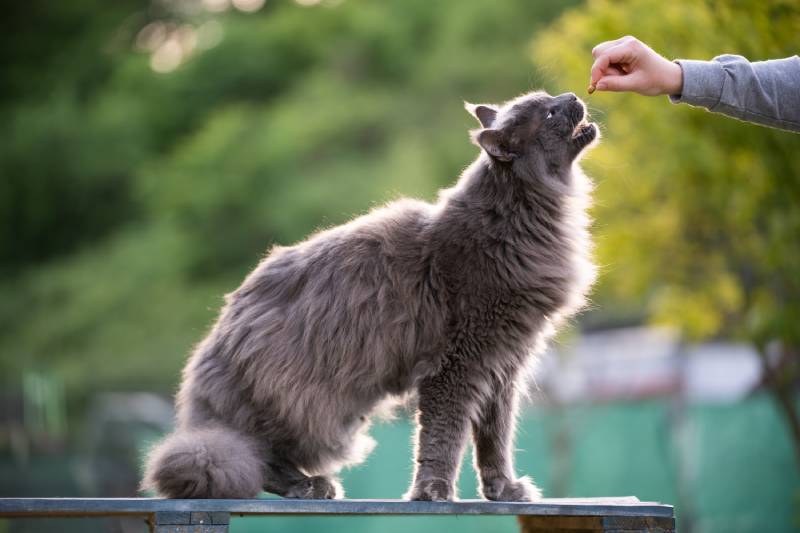
5. Allow Your Cat to Come to You
With your blanket in place and treats in your hand, you now have to be patient and allow your cat to approach you. Avoid picking them up or reaching for them when they get close to you. Cats don’t like feeling confined, and if you try to hold them down, they’ll consider the whole experience negative.
Try talking to them in a calm and encouraging voice. This might help relax your cat further.
6. Decide Whether to Pet or Not to Pet
Once your cat has actually approached your lap, you need to read their mood. If they are showing signs of contentment, such as purring, rubbing, and slow blinking, you can safely pet them.
Be sure to pet them gently, and give them scritches where they like them. But if your cat appears restless, such as flicking their tail and having twitching skin and “airplane” ears (folded out and to the sides), avoid petting them.
Your cat might want to stay on your lap but otherwise not be touched. Learn your cat’s body language and adjust your behavior accordingly.

7. Don’t Use Your Lap for Unpleasant Chores
If you need to trim your cat’s claws or give them medication, don’t do these things on your lap. All your efforts and patience will be lost. You want them to associate your lap with pleasant experiences, such as sleeping and gentle pets.
If you have been using your lap for these unpleasant tasks, you’ll need to find another way to do them and start training your cat to view your lap as a safe place.
8. Always Allow Your Cat to Leave
If your cat stands on your lap and then shows signs that they are going to jump off, allow them to do so. If you attempt to restrict your cat’s movements, this is a negative experience that your cat will associate with your lap.
Remember, there’s no guarantee that any of these tips will work. Some cats are just not meant to be lap cats. This is when you should look for other signs that your cat loves you.
Other Ways That Your Cat Shows That They Love You
Your cat may do several things to show that they love you:
- Slow Blinking: When a cat looks at you and slowly blinks their eyes, this is a sign of trust. At that moment, they are letting you know that they trust you.
- Kneading: Kittens knead their mothers when nursing, so an adult cat kneading you is a sign that they are probably content and relaxed.
- Purring: Purring is usually (but not always) a sign that your cat is quite comfortable and happy.
- Head Bunting and Rubbing: When your cat rubs your legs or bonks their head on you, this is their way of marking you as their territory. Cats have scent glands in multiple places, so they are claiming you as their own.
- Rolling: When a cat rolls onto their back while you’re there, this is another sign of trust. The cat’s abdomen is a vulnerable area, so when they show their belly, people believe that they are demonstrating great trust.
- Grooming: If your cat likes to groom your hair or elsewhere, this is an affectionate way of showing that they care. You’ll notice that cats tend to groom each other, so when you’re on the receiving end, your cat probably loves you.
- Giving Love Bites: Not all biting is aggressive. Some cats might bite you gently, which is essentially a love bite. However, this shouldn’t be encouraged as you don’t want your cat biting a child or another vulnerable individual.
- Running to Greet You: When you come home and your cat trots over to enthusiastically rub your legs, it means they missed you when you were gone.

 Conclusion
Conclusion
It’s hard to say what makes one cat a lap cat and another not one. It might be the age or the breed, or it could be that your cat’s personality is simply like that.
You can try these tips, which might just work for your cat, but you need to accept that this might just be how your cat is. Remember to always respect your cat and never force an interaction. If you pick them up and they struggle, put them back down.
There’s no way of forcing affection, so we should appreciate our cats the way that they are and look for other signs of love and trust.
Featured Image Credit: hocus-focus, Getty Images
